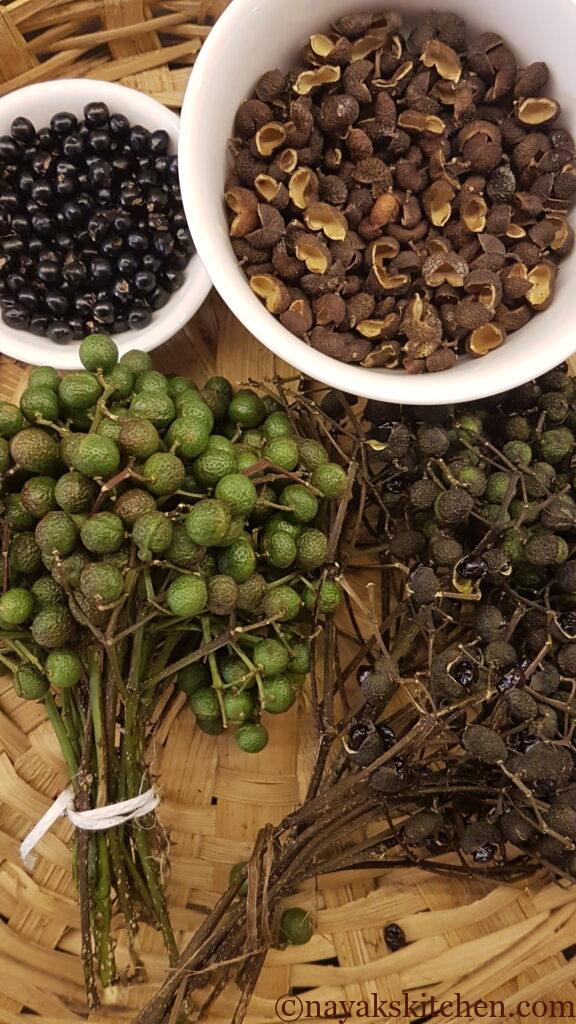Tefla…A revered culinary ingredient in a Goan kitchen! Its signature taste, tingling aftertaste, unique flavour and aroma (without which some delicacies would never taste the same) makes this spice stand out amongst other popular spices. Know all about the lesser known native spice, tefla or teppal used in Goan cuisine.
Check out the classic Goan Khatkhate recipe (Goan Mixed Vegetable Curry/Stew) below.
What is Tefal/Teppal spice?
Tefal (singular) or tefla (plural) is an indigenous spice used in many recipes of Goan cuisine. It is known as tirphal, chirphal or teppal in other languages. Many recipes of Goa, Konkan, Kanara coasts and Coorg use tefla in their traditional cuisines.
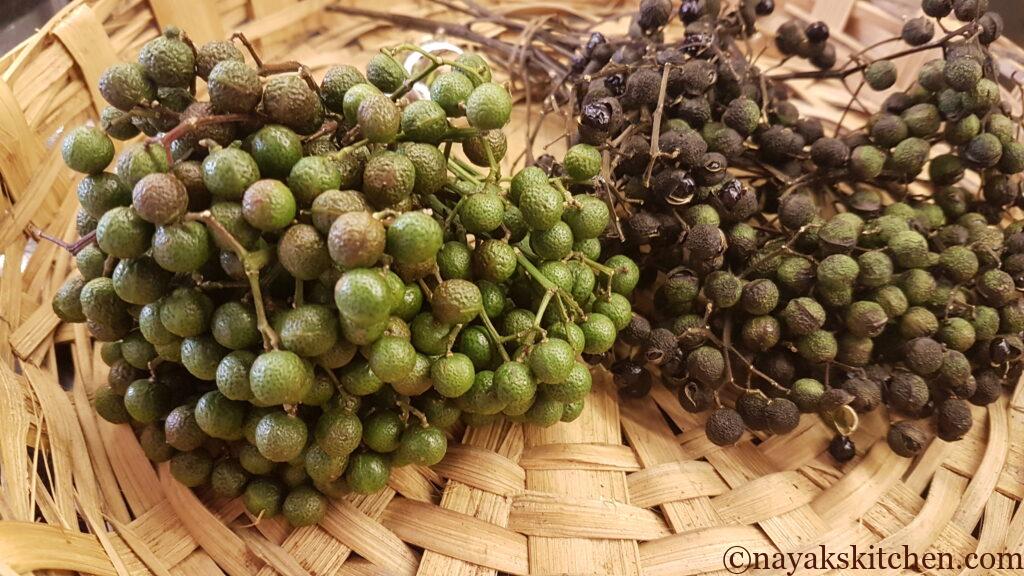
Known as ‘Indian prickly ash‘ in English it belongs to the genus of ‘Zanthoxylum‘. This spice contains a component, ‘sanshool‘ which is a local anaesthetic that causes a tingling or numbing sensation on the tongue.
Hydroxy-alpha sanshool is a molecule found in plants from the genus Zanthoxylum. It is believed to be responsible for the numbing and tingling sensation caused by eating food cooked with spices belonging to the above genus. If you ever had a curry or gravy containing ‘tefla/teppal’ and you accidently happened to bite it, you would know what I am talking about. 😝
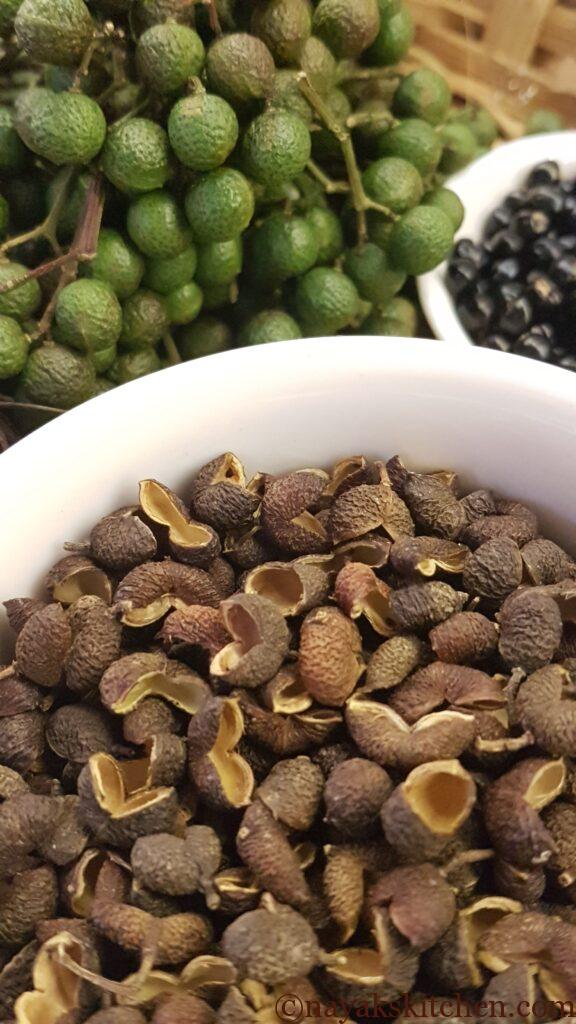
Tefla trees grow along the west coast of India in Goa, Maharashtra and Karnataka. In rural Goa, nearly every household has a tall thorny tefla tree. These trees bear fruits in the monsoons in the form of bunches with berries, which are dark green in colour. The bunches have sharp thorns and hence you have to handle them carefully.
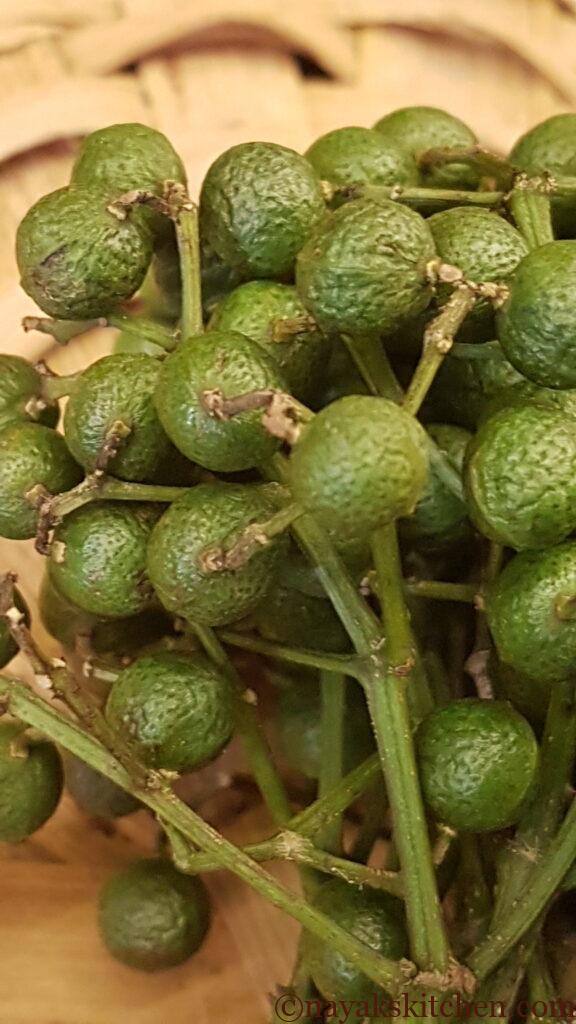
They are harvested in the months of August and September. During this time, the fresh fruits are used in many customary preparations. Also, it is during this period they are sun-dried and stored for use all-year round. The woody part (pericarp) of the tiny fruits is used as a spice, specially in seafood delicacies. The inner black seed is discarded.
What is the difference between Tefla/Teppal and Sichuan pepper?
Tefla is many a times being referred to as ‘Sichuan pepper‘ or ‘Szechuan pepper‘. There is a similarity and a difference between these spices. Tefla, Sichuan pepper and Szechuan pepper belong to the same genus (family) of Zanthoxylum.
However there are many differences in them. Sichuan pepper is mostly used in Chinese cuisine. It is reddish in colour (has a more of rust-like hue) and is small in size.
Whereas, tefla (when harvested fresh) are dark-green in colour and as they dry they turn brown-black. Tefla are mostly used in the cuisines of the west coast of India.
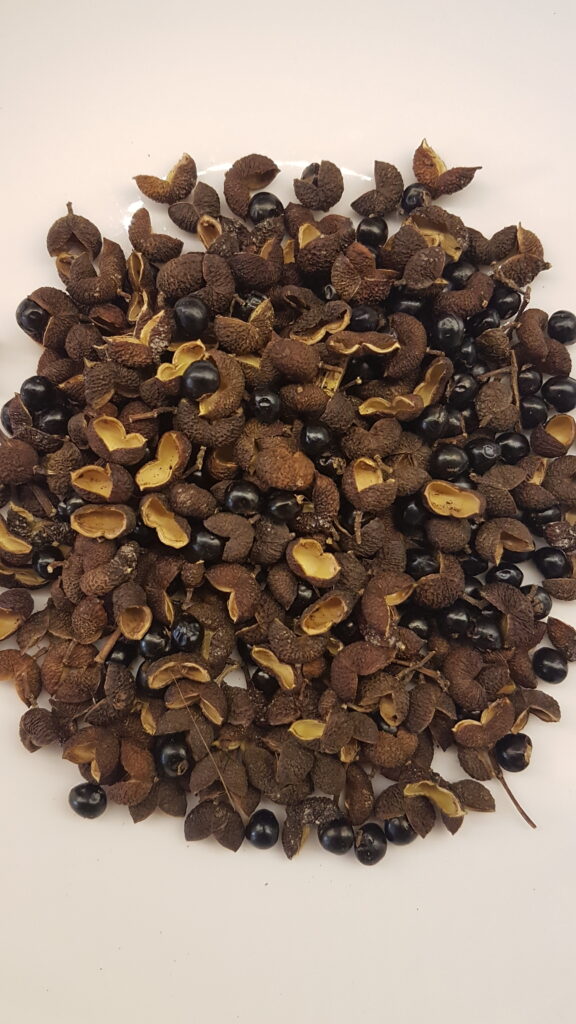
Tefla 
Sichuan pepper
Unique taste of Tefla
This simple and lesser known spice harbours in it one of the most different tastes you have ever experienced. Tefla have a unique taste and aroma. It is very difficult to categorise or describe its taste. They are neither pungent nor hot. It has slight lemony overtones and a woody feel…in Konkani we refer to this taste as ‘mirmirit‘. (Yet to find an appropriate English word for it 😁).
For instance, if you happen to chew upon it, you are left with a tingling tongue and a slight numbing effect in your mouth.
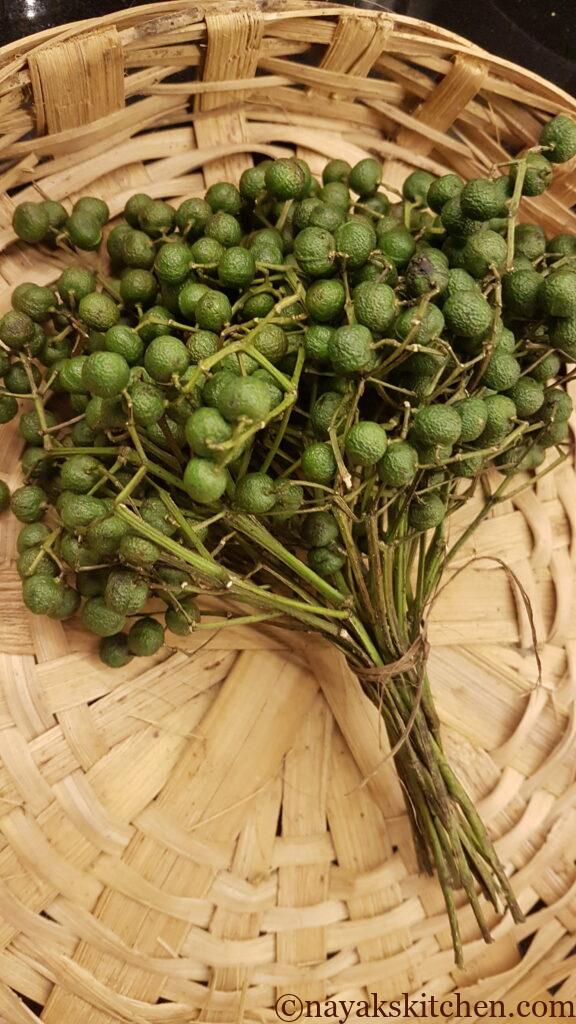
Fresh tefla 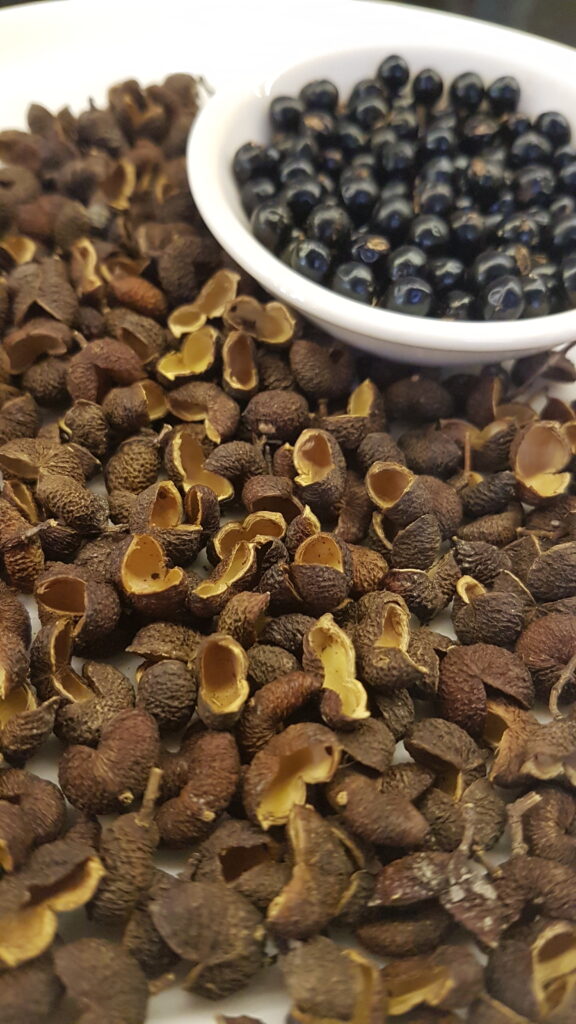
Dried tefla with seeds that are discarded
How is Tefal/Teppal used in cooking?
Tefal is used as a whole spice. Also, it is never ground. Moreover, it has a dominant flavour of its own. Tefla are used in many vegetarian and non-vegetarian dishes. Both fresh and dried variants are used in cooking. Fresh tefla have a very strong and biting taste to them. If you are using the dried variant, the black seeds inside it should be discarded.
Crush and pound lightly in a mortar with a pestle and soak them in a little water to release its distinct aroma. Add it to the dish along with the water towards the end so that you don’t end up with a sharp taste. Also this spice is never consumed but discarded while eating.
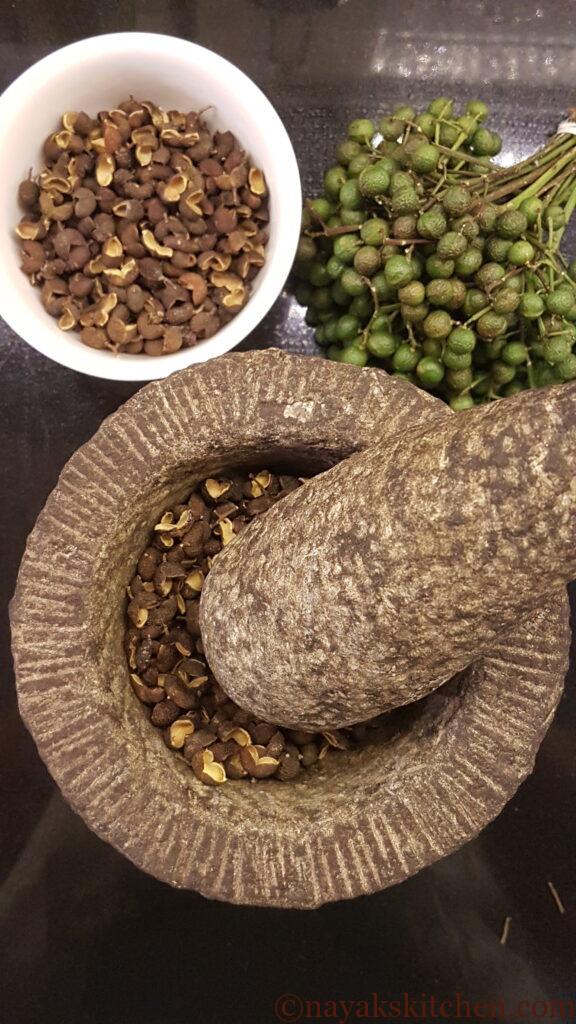
How to dry and store tefla?

Tefla trees bear fruits during the rainy season. Fresh tefla (dark green in colour) are plucked. During the monsoons the markets are flooded with bunches of tefla. They are then sun-dried till they break open and turn brown-black in colour. The black seeds are discarded and the dried woody part (pods) are used all year round.
Once dried well, store them in a clean, dry and airtight container for longer shelf life. If they are not dried properly, consequently they will develop a thin white layer of fungus over them. Do not use such tefla in cooking.
Why are tefla added to certain dishes?
Tefla are used in a number of veg and non-veg recipes. It is indispensable in certain preparations. For example, ‘Bangdyache Hooman‘ (Mackerel Fish Curry) cannot be prepared without tefla. Likewise, ‘Khatkhate‘ (Mixed vegetable stew in a coconut based gravy) or ‘Savraak’ in the vegetarian category. It is a key ingredient which renders that remarkable taste to these recipes.
In addition to the taste factor, there are other vital reasons why tefla is used in certain preparations. This spice is also known for its carminative(a substance that helps prevent formation of intestinal gas), anti-flatulent and digestive properties.
For example, mackerel has a very ‘offensive fishy smell‘ and is flatulent in nature. Addition of a few pods of this miracle spice overpowers the fishy smell and also prevents you from having an upset stomach. Similarly, if you are a vegetarian, it helps you to digest lentils, beans etc.. So you enjoy your food without the fears of ruining your gut. Taste bhi health bhi! This inherent food wisdom kept our ancestors in the best of health. In fact, a decoction of fresh or dried pods was used to treat colic, diarrhoea, dysentery and constipation.
To sum it up, this humble spice deserves accolades for its modest contribution without which our cuisine would never be the same.
Below is a photograph of tefla in all its stages. The bottom left corner shows fresh dark green tefla. Further, bottom right corner consists of semi-dried tefla. The upper right corner has tefla that are completely sun dried. The top left corner contains black seeds which are discarded or you could sow them in your backyard and grow some tefla trees!! 😀
